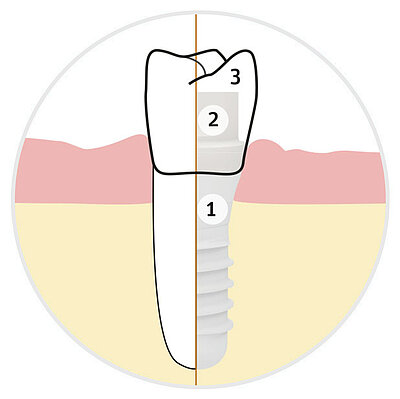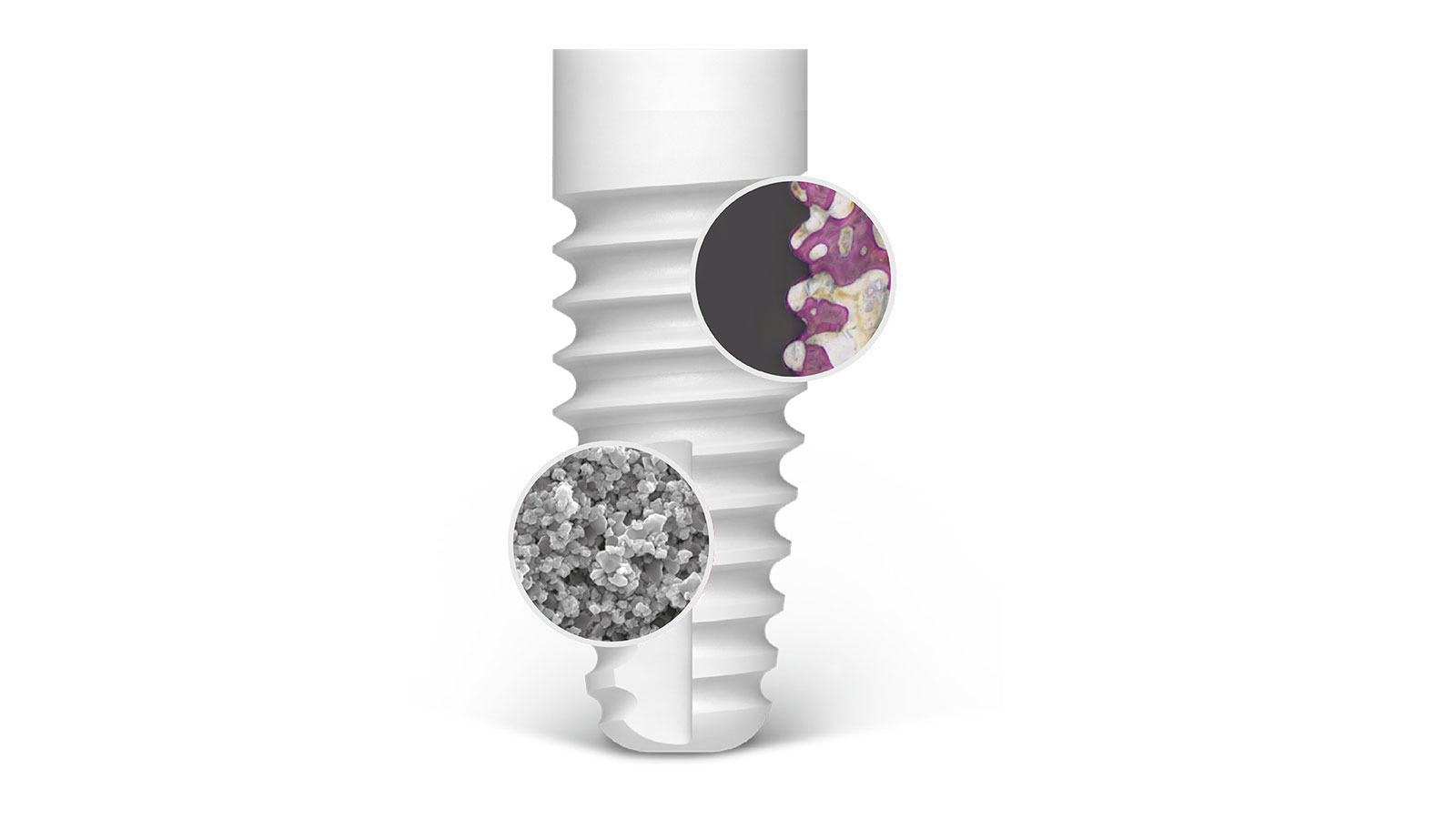
What is a dental implant?
Dental implants are the artificial replacement of the tooth root. Millions of natural teeth are replaced by artificial teeth every year.
Modern biocompatible implants are able to restore the function of the missing tooth. These dental implants can also fuse with the surrounding bone.
Ceramic implants have been increasingly used for some years now - for good reasons.
Smile please! Ceramics for aesthetic dental implants
More and more patients are opting against metal and for ceramics in their mouths. Ceramic dental implants look natural, convince with their aesthetic result and help to achieve a healthy smile.1,2,3
Ceramic dental implants have a natural white color, making them visually superior to titanium implants. With metallic implants, gray edges can appear. This is excluded with the natural white ceramic.1,2,3

Gums prefer ceramics
We use zirconia ceramics for dental restorations. The material zirconia is corrosion resistant6, i.e. it is not degraded by the organism. Even in contact with certain oral bacteria and other dental materials, zirconia ceramic implants are not affected.
Appropriate surface treatment favors the ingrowth of the implant into the bone.

References
1. Cosgarea R, Gasparik C, Dudea D, Culic B, Dannewitz B, Sculean A. Peri-implant soft tissue colour around titanium and zirconia abutments: a prospective randomized controlled clinical study. Clin Oral Implants Res. 2015;26(5):537-544. doi:10.1111/clr.12440.
2. de Medeiros RA, Vechiato-Filho AJ, Pellizzer EP, Mazaro JV, dos Santos DM, Goiato MC. Analysis of the peri-implant soft tissues in contact with zirconia abutments: an evidence-based literature review. J Contemp Dent Pract. 2013;14(3):567-572. doi:10.5005/jp-journals-10024-1364.
3. Noumbissi S, Scarano A, Gupta S. A Literature review study on atomic ions dissolution of titanium and its alloys in implant dentistry. Materials (Basel). 2019;12(3):368. doi:10.3390/ma12030368.
4. Sivaraman K, Chopra A, Narayan AI, Balakrishnan D. Is zirconia a viable alternative to titanium for oral implant? A critical review. J Prosthodont Res. 2018;62(2):121-133. doi:10.1016/j.jpor.2017.07.003.
5. Kajiwara N, Masaki C, Mukaibo T, Kondo Y, Nakamoto T, Hosokawa R. Soft tissue biological response to zirconia and metal implant abutments compared with natural tooth: microcirculation monitoring as a novel bioindicator. Implant Dent. 2015; 24(1):37-41. doi:10.1097/ID.0000000000000167.
6. Siddiqui DA, Guida L, Sridhar S, Valderrama P, Wilson TG Jr, Rodrigues DC. Evaluation of oral microbial corrosion on the surface degradation of dental implant materials. J Periodontol. 2019;90(1):72-81. doi:10.1002/JPER.18-0110.

